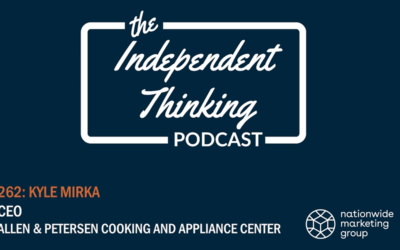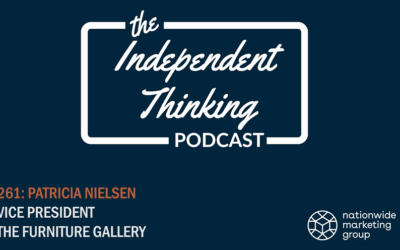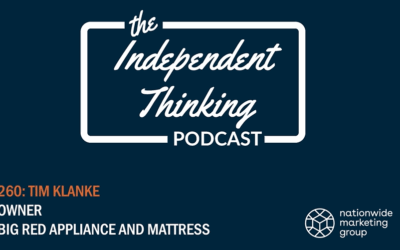The way customers pay has changed dramatically over the last few years — both in-store and online. From tap-to-pay to “Buy Now, Pay Later” (BNPL), the future of retail payments is digital, fast, and customer-focused. For Independent retailers, offering the payment options preferred by your local consumers is essential not only to stay competitive, but to stand out.
Read more about two top payment trends for 2025 and key considerations for incorporating these options into your POS system and e-commerce platform.
More Customers Want Contactless Payment
Many in-store shoppers no longer want to swipe or insert — they want to tap. Contactless payments via credit card, smartphone, or even select smartwatches have become increasingly popular and even expected.
According to Mastercard Contactless Consumer Polling, 51 percent of U.S. consumers are using at least one method of contactless payment to shop in-person.
Why?
Contactless Payment Benefits for Customers
- Speed: Quicker, frictionless transactions at checkout
- Convenience: Payment can be made using a mobile wallet or compatible watch
- Digital safety: Tapping a card, phone, or watch can reduce risk of data breaches
- Hygiene: 50 percent of consumers surveyed by Mastercard expressed concern over the cleanliness of in-store touchpads
How to Offer Your Customers Contactless Payment Options
The most common way to go contactless would require upgrading your POS system to include NFC-enabled payment terminals. NFC (or near-field communication) is a wireless technology that allows communication between two electronic devices that are in very close proximity, typically within an inch, give or take.
NFC-enabled POS systems can also accept the more traditional swipe or insert options, so your customers can opt to use the method most comfortable for them.
FIND A POS PROVIDER that offers contactless payment options.
Contactless QR Code Payment Option
Another growing trend in the retail industry is the use of QR codes — which can also be incorporated into a contactless payment strategy. While this method will require a compatible payment app, it offers a nimbler solution if a full POS upgrade is not a realistic option for your business.
Buy Now, Pay Later is Growing in Popularity
Buy Now, Pay Later (BNPL) is becoming a more widely used and offered option, especially popular with younger shoppers. Service providers like PayPal allow customers to split purchases into interest-free payments, typically requiring 25 percent down, with the remaining payments spread out over a set period.
As reported by Newsweek, research conducted by PartnerCentric.com revealed that 52 percent of Americans now utilize BNPL options, with both Gen Z (59 percent) and Millennials (58 percent) driving the trend. Yet, a study by PayPal found that the Gen X and Baby Boomer generations are more likely to use BNPL for higher ticket purchases.
In an interview with Newsweek, CEO and founder of PartnerCentric, Stephanie Harris, shared, “This shift tells us consumers are looking for tools that match the pace and pressure of modern life. For brands, offering BNPL isn’t just a checkout upgrade — it’s a signal that you understand your customers’ reality and want to empower their choices. BNPL is becoming less about delaying payments and more about designing a financial rhythm that works for you.”
How BNPL Can Benefit Your Business
Giving customers the option to Buy Now, Pay Later can benefit your business in several ways, including:
- Increased online conversion rates: Offering BNPL as an option can decrease the potential for cart abandonment.
- Higher average order value (AOV): Budget-conscious consumers gain access to bigger-ticket items with the ability to spread out payments over time.
- Greater customer satisfaction: BNPL adds convenience and flexibility to the customer experience, which can, in turn, drive brand loyalty.
- Receive full payment upfront: Although the customer will pay in installments, the service provider will compensate your business in full at the point of sale.
Is BNPL Right for Your Business?
BNPL providers typically charge retailers transaction fees, which are higher than credit card fees. For this reason, if you carry low-margin items, this option will likely hurt your bottom line. However, for higher-ticket items like furniture, appliances, and electronics, BNPL might be worth trying — especially if your customers frequently ask about payment plans.
When considering a provider, be sure to choose one that integrates with your POS or e-commerce platform. Nationwide Marketing Group (NMG) partners with several top-tier providers to offer secure financing options that pair seamlessly with the NMG OneShop platform. “A website powered by NMG OneShop is designed to easily sync with various payment and financing providers,” explains Taylor Ansley, VP of Product Development for NMG. “This gives you flexibility and choice in how you run your business — and allows you to offer payment flexibility at checkout.”
LEARN MORE about NMG’s payment and financial partners through OneShop.
As we look to the future for payment options, flexibility is crucial to providing a shopping experience that meets customers where they are and competes with big box competitors. If implementation feels daunting, it doesn’t need to be.
Listen to your local customers. Learn their preferences. Consider potential — and real — frustrations or roadblocks that might hinder a purchase. And take the steps that make the most sense for your audience and your business.




